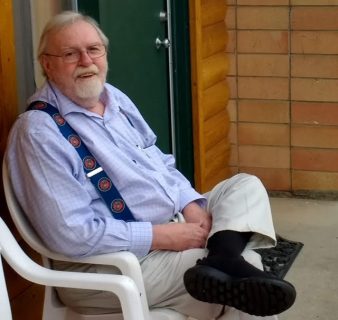Language lessons
Published 12:00 am Saturday, August 28, 2010

- Miranda Pederson/Daily Newsduring a Chinese language class Friday at W.R. McNeill Elementary School.
When Liu Chunxue walked down the hallway Friday at W.R. McNeill Elementary School, a few students waved as she walked past.
“Ni hao,” they said, greeting Liu with the Chinese phrase for “hello.”
“They learn very fast and they really like it,” she said. “One of the fifth-graders told me, ‘I can’t wait until Monday.’ ”
Liu is one of five teachers who traveled from China to Bowling Green to bring a dose of their language to the area. It’s part of a program through Western Kentucky University, which seeks to strengthen the university’s ties with China.
A total of 11 Chinese teachers are stationed in this area, including Barren and Logan counties, and hundreds of students in Warren County are taking Chinese classes for the first time.
Teachers arrived in Bowling Green at the end of July and began orientation classes. None has been to this country before.
“I think it’s a good place,” said Deng Lulu, 24, who teaches at South Warren High School. “I love it. The people, everyone is so kind and the environment here – it’s the country and the city combined. It’s good for living.”
They’re here for at least a year and are staying with host families who are involved with the county or city school system or with WKU. Deng lives with Tracey Norman, a social studies teacher at South Warren High School. Both Norman and Nicole Clark, assistant principal at Warren East High School, who is hosting another Chinese teacher, visited China for 30 days as part of a Fulbright scholarship.
The Chinese language is tricky because, unlike other languages, it does not use the English alphabet. Instead, China uses its own alphabet, which includes tens of thousands of symbols.
“There’s no cultural reference” to the language, Norman said. For most European languages, “there’s so many English words that they are similar … because of the kind of melting pot we are.”
That makes Chinese more difficult to learn and more difficult to teach. But both students and teachers are giving it a shot and breaking language barriers, they said.
“At the beginning, they were excited,” Deng said. “But now they know it’s hard to learn Chinese.”
Still, students are making progress. Wang Xi, 27, teaches at Warren East High School and her students are already speaking in sentences. Wang uses cartoons to help students visualize the different Chinese characters.
Both Wang and Deng are post-graduate students who have language degrees. Wang majored in linguistics and Deng majored in translation theory and practice. Both have taught English classes in China.
“If you cannot speak English well, it’s almost impossible to find a job now” in China, Wang said.
Similarly, knowledge of another language is beneficial when applying for jobs in the United States. And as China surpasses other countries in both population and economics, students who learn Chinese are at an advantage, Clark said.
“If you really learn this language, you can write your own ticket,” she said. “You can get a job anywhere. Is it going to be hard? Yes. It’s going to be very difficult.”
But local Chinese teachers are trying to make lessons as simple as possible with videos, flash cards and other techniques.
At Greenwood High School, Liang Zhongjie is in the second phase of this year’s lessons – teaching students the Chinese names of family members. They’ve been working on pronunciation and basic Chinese characters and have learned Chinese greetings.
“By the end of the year I hope they can use simple Chinese sentences to express themselves and introduce themselves,” he said.
It’s not the first time Liang has taught Chinese. He taught the language to international students who studied abroad in China. But it is the largest group he’s taught. In China, about 10 students attended his class. Now, he’s teaching 47 children at Greenwood.
“I was well-honored and surprised that I got 47 students learning Chinese here,” he said. “They behave, and they’re doing quite well.”
Aside from expanding his teaching career, Liang, 28, took part in the program to volunteer his services. Volunteerism is something Liang’s passionate about, and he often volunteered in China, he said.
“I was a volunteer for many activities. I think being helpful to others is important. It’s meaningful,” he said. “So I chose to be a volunteer teacher here.”
In China, students are introduced to the English language by middle school, but some local Chinese teachers began studying English as elementary students. The sooner a student starts learning a language, the better, they said.
Clark said she would like to see the program continue in county schools and be offered in elementary classes.
“The sooner you introduce it to a child … it’s easier to build the framework,” she said.
Chinese is already offered this year at Parker-Bennett-Curry and McNeill elementary schools. Guo Ruijie teaches about 200 third-, fourth- and fifth-grade students at Parker-Bennett-Curry, and she’s pleasantly surprised by their interest in Chinese and their grasp of the language.
“I was a little nervous at first because I have never taught such young kids before, and I was afraid they would not be so well-behaved,” she said. “I was afraid they would not like me and would not like Chinese.”
Students are learning Chinese greetings, calligraphy, Chinese numbers and Chinese songs. Some students are excelling in the language and have aced every test so far, she said.
“I didn’t expect my students would love Chinese so much,” she said. “I think I underestimated them before.”
Guo, 24, has been studying English since she was in middle school. She fell in love with the language and went on to get a college degree in English and taught it in China.
“I think language can be (learned) much easier when the students are taught at a young age. I think it’s natural,” she said.
Liu is teaching Chinese in grades as low as kindergarten. Each week, she sees nearly 400 students at McNeill Elementary. She teaches kindergarten through second grade twice a week for 20 minutes, and she teaches third through fifth grade twice a week for 30 minutes.
She’s using flash cards, videos and worksheets to teach Chinese words, symbols, phrases and numbers. Even the kindergarten students have memorized Chinese numbers, she said.
“I didn’t expect them to remember much,” she said. “But most of them can remember (numbers) in Chinese.”
Liu, 25, has degrees in English language and literature, with an emphasis in English society and culture. She started learning English when she was 6 years old and discovered she had a knack for it.
“All the people from all over the world, they want to learn Chinese because Chinese is one of the most popular (languages) now,” she said. “I wanted to do something for people, to help somebody, and this is one way. Because I am Chinese, I can teach them and let them know my language and my culture.”






